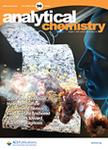版权所有:内蒙古大学图书馆 技术提供:维普资讯• 智图
内蒙古自治区呼和浩特市赛罕区大学西街235号 邮编: 010021

作者机构:Huazhong Univ Sci & Technol Hubei Bioinformat & Mol Imaging Key Lab Syst Biol ThemeDept Biomed EngnColl Life Sci & Key Lab Biomed Photon MOEWuhan Natl Lab Optoelec Wuhan 430074 Peoples R China Huazhong Univ Sci & Technol Sch Artificial Intelligence & Automat Minist Educ Image Proc & Intelligent Control Key Lab Wuhan 430074 Peoples R China Huazhong Univ Sci & Technol Coll Life Sci & Technol Dept Genet Wuhan 430074 Peoples R China
出 版 物:《ANALYTICAL CHEMISTRY》 (分析化学)
年 卷 期:2020年第92卷第17期
页 面:12062-12070页
核心收录:
学科分类:081704[工学-应用化学] 07[理学] 08[工学] 0817[工学-化学工程与技术] 070302[理学-分析化学] 0703[理学-化学]
基 金:National Natural Science Foundation of China [31700746, 21775049] Fundamental Research Fund for the Central Universities [2020kfyXJJS034]
主 题:Microfluidics Molecular diffusion High-throughput Single cell Cell signaling
摘 要:Cell signaling greatly affected by complicated and temporally dynamic extracellular microenvironments controls most of the physiological functions in vivo. To reconstruct or simulate such microenvironments in vitro represents a fundamental approach for revealing the underlying mechanisms of those sophisticated processes. Recent advances in microfluidics have added a new dimension to cell signaling analysis, for example, concentration gradient generators (amplitude aspect) or hydrodynamic gating strategy (frequency aspect), but it is still challengeable to capture single-cell dynamic signaling in response to a mimicked extracellular microenvironment with varied stimuli waveforms of different amplitude and frequency in a high-throughput manner. In this article, we proposed a novel microfluidic strategy coupling multichannel synchronous hydrodynamic gating with microfluidic concentration gradient generators (mu MHG-CGG) to probe dynamic signaling of single cells with high throughput. The mu MHG-CGG allows rapid delivery of dynamic chemical signals in both high frequency (as high as 670 mHz) and multiple amplitude domains at the same time and simultaneously high-throughput probing cell dynamics at single-cell resolution in real time. By applying the proposed system, the mechanisms for encoding/decoding systems (termed frequency coding or amplitude coding) via GPCRs-mediated signaling pathways responding to histamine (HA) and adenosine triphosphate (ATP) in single HeLa cells were investigated. The optimal drug concentrations of single cells responses to HA and ATP individually or in combination were also successfully discussed, allowing us to obtain both single-cell heterogeneity and statistics from the cell population.